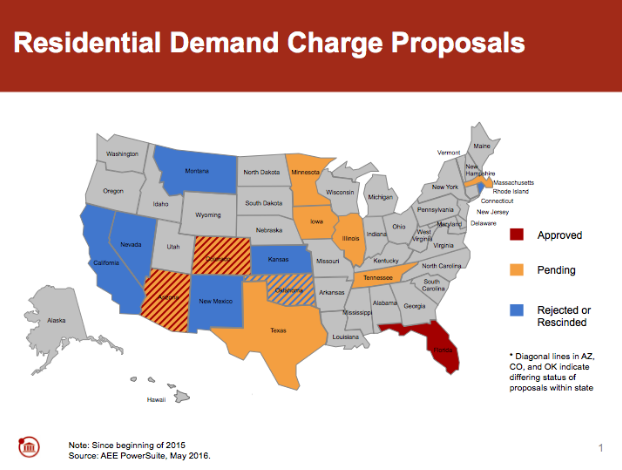
The growth in distributed energy resources (DER) is enabling consumers to take charge of their energy use, while providing new tools for a more affordable, reliable, and clean grid. But the increased adoption of DER has not come without controversy. Rate design issues, from net metering to fixed-charge fees and everything in between, are popping up with increasing frequency across the country. We at Advanced Energy Economy (AEE) have been at the forefront of these conversations in a variety of different arenas—most recently leading a collaborative discussion with utilities and other key stakeholders in New England around rate design for a DER future, and our ongoing involvement in New York as part of the Reforming the Energy Vision (REV) proceeding, most recently focusing on Value of DER/Successor to Net Energy Metering discussions—grappling with these issues and convening stakeholders to establish a dialogue on the best way forward. Our affiliate, AEE Institute, also convened public utility commissioners at forums in the Midwest and Mid-Atlantic regions to discuss distribution system planning to modernize the electricity grid.
Last November, the National Association of Regulatory Utility Commissioners (NARUC) jumped into the ring and created a Staff Subcommittee on Rate Design to address the challenges inherent in a rapidly changing electricity system. The first order of business, as stated by NARUC President Travis Kavulla, was to develop a manual to assist jurisdictions in navigating the challenges, considerations, and policy developments related to the increase in DER on the grid. Following an initial round of comments, which AEE participated in, to inform the subcommittee on what to include in the manual, NARUC issued a draft manual on DER Compensation on July 21 and convened a town hall meeting two days later, during the Summer NARUC meeting in Nashville, to receive public input. On September 2, AEE submitted comments on the draft manual, applauding NARUC and President Kavulla for developing a solid first draft, while encouraging them to make additional improvements before the final version is released in November.




